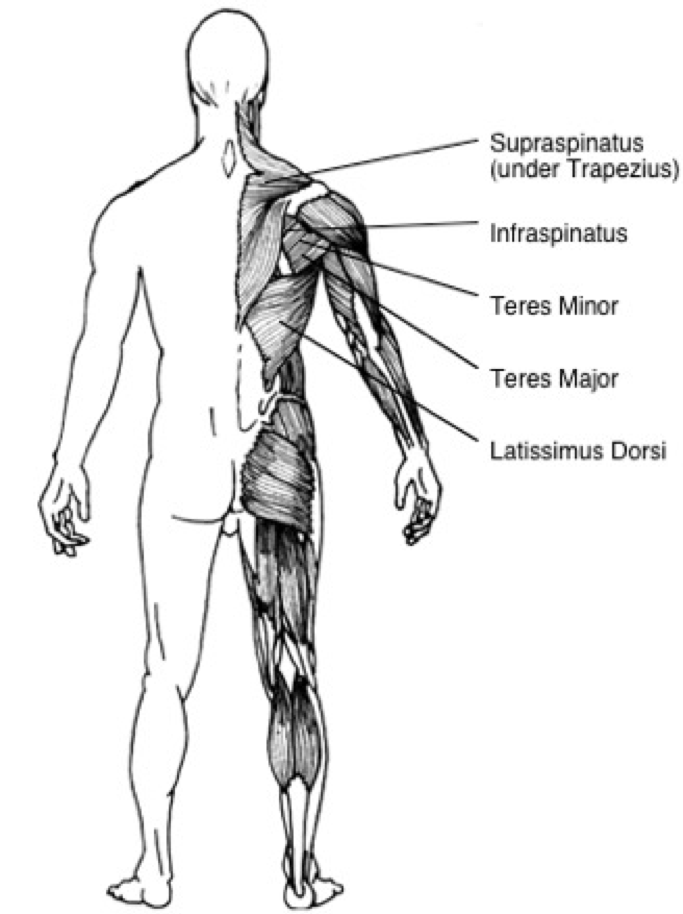By Dr Paul Batman, PhD.
MUSCLE: TERES MAJOR
DESCRIPTION:
 The teres major is a small round muscle that runs in the same direction as the latissimus dorsi and is often referred to as the “Lats little helper”.
The teres major is a small round muscle that runs in the same direction as the latissimus dorsi and is often referred to as the “Lats little helper”.
ORIGIN:
Lower one third lateral border of the scapula.
INSERTION:
Medial lip bicipital groove of the humerus.
MUSCLE GROUPS:
The teres major belongs to the following muscle groups:
Shoulder joint extensors, shoulder joint adductors, shoulder joint medial rotators. These actions occur only with resistance. There is possibly very little activity of the teres major in dance or aerobic movements when the shoulder is adducted without resistance.
STRENGTHENING EXERCISES:
Lat pulldown, one arm dumbbell row, cable rotate.
CASE STUDY STRENGTHENING EXERCISE: ONE ARM DUMBBELL ROW (neutral grip).
1. Kneel on a bench in a prone position with your right arm and leg in contact with the bench. Maintain stability by anchoring your left foot to the ground
2. Grasp the dumbbell with your left hand, with the arm extended downward
3. Hold the dumbbell in a neutral grip so that it is parallel to the side of the bench
4. From this starting position slowly pull your arm back by bending your left elbow, keeping the left arm close to the body
5. Continue to move your left elbow as far back as possible
STRETCHING EXERCISES:
Lat and triceps stretch, low back stretch
CASE STUDY STRETCHING EXERCISE: LAT AND TRICEPS STRETCH.
1. Stand in an upright position with your arms by the side of your body
2. Raise your right arm to the side of your body and place it behind your head with your right elbow bent
3. Grasp your right elbow with your left hand and gently push it down and towards your head
4. Hold the stretch for approximately 20 seconds and then return your right arm to the starting position
5. Repeat the stretch on your left arm
PALPATION:
Palpate the teres major from behind. With the fingers against the anterior deltoid, palpate the teres major with the thumb to the side of the inferior angle and below the posterior deltoid.
TRAINERS TIPS:
1. Maximum involvement of the teres major is at 90 degrees of adduction against resistance. The teres major shows no activity without resistance back to the anatomical position during shoulder joint extension. When the arm is moved into shoulder joint hyperextension the teres major is active without resistance. This can be seen in a seated row (neutral grip) as the elbow passes the body.
2. Because of the origin of the teres major, during shoulder joint extension and shoulder joint adduction, the scapula must be initially stabilized in downward rotation and adduction, preventing any upward rotation and abduction from taking place. The trapezius, rhomboids and pectoralis minor will stabilize the scapula during the first part of this movement. If this did not occur the origin of the teres major on the scapula would move toward its insertion on the humerus.
